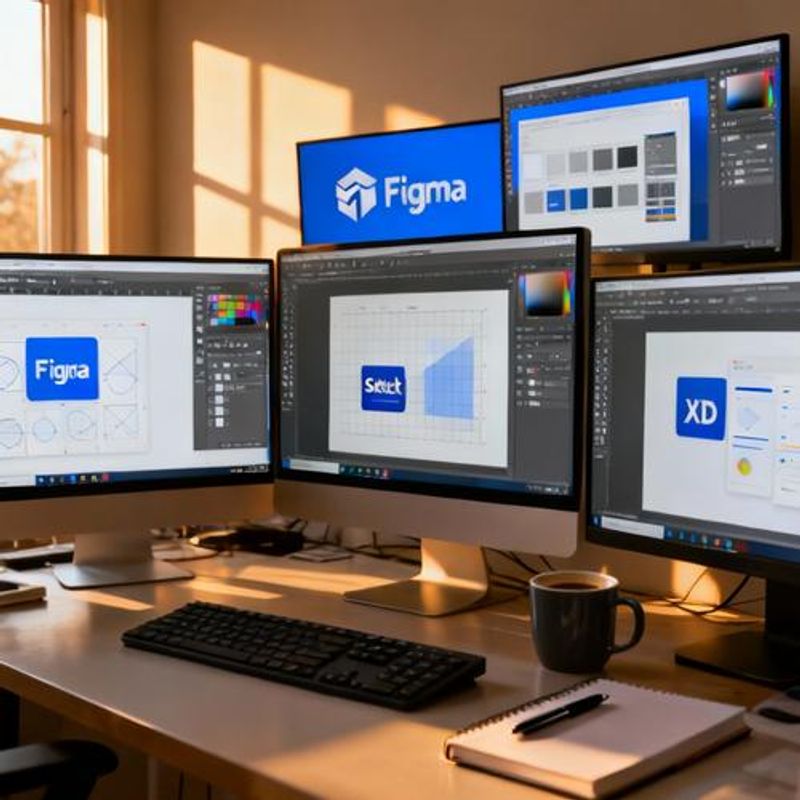The Complete Guide to UI/UX Design Tools for Mid-Level Designers in 2024

As a mid-level designer, you've likely outgrown basic design software but aren't sure which advanced UI/UX design tools will actually accelerate your career and improve your workflow efficiency. This comprehensive guide breaks down the most powerful design tools available today, helping you choose the right combination for your specific design challenges, budget constraints, and team collaboration needs.

Why Tool Selection Matters More at the Mid-Level Stage
Mid-level designers face unique challenges that junior designers rarely encounter. You're expected to deliver complex projects faster, collaborate across multiple teams, maintain design systems, and often mentor junior team members. The tools you choose directly impact your ability to scale your work, maintain consistency, and demonstrate strategic thinking to stakeholders. Poor tool choices can bottleneck your productivity and limit career advancement opportunities.
Essential Tool Categories Every Mid-Level Designer Needs
The modern UI/UX design workflow requires tools across five critical categories. Here's what you need to succeed:
- Design and Prototyping Platform (Figma, Sketch, Adobe XD)
- User Research and Testing Tools (Maze, UserTesting, Hotjar)
- Design System Management (Zeroheight, Storybook, Notion)
- Collaboration and Handoff Solutions (Zeplin, Avocode, Developer Mode)
- Specialized Enhancement Tools (Principle, Framer, Lottie)
Core Design Platform: Making the Strategic Choice
Your primary design platform forms the foundation of your entire workflow. Figma dominates the market with 77% of designers using it regularly, thanks to real-time collaboration and robust component systems. However, Sketch remains powerful for Mac-based teams focusing on mobile apps, while Adobe XD integrates seamlessly with Creative Cloud workflows. Consider your team's operating system preferences, collaboration needs, and existing tool ecosystem. Figma's browser-based approach eliminates version control issues and enables instant stakeholder feedback, making it ideal for remote teams and complex projects.
User Research Integration: Beyond Basic Usability Testing
Mid-level designers must validate design decisions with data. Maze excels at unmoderated usability testing with heat maps and conversion funnels. UserTesting provides qualitative insights through recorded user sessions. Hotjar offers comprehensive analytics including session recordings and behavior analysis. The key is establishing a research cadence that informs design iterations without slowing down development timelines. Integrate these tools early in your design process rather than treating research as a final validation step.
Design System Mastery: Tools for Scalable Design
Maintaining design consistency across products requires dedicated system management tools. Zeroheight creates beautiful, automatically updated style guides that sync with Figma components. Storybook works directly with developer environments, ensuring design-code alignment. Notion provides flexible documentation for design principles and usage guidelines. The most effective approach combines these tools: use Figma for component creation, Zeroheight for visual documentation, and Notion for process guidelines and decision rationales.
Tool Selection Framework: Budget and Team Considerations
Start with a core toolset: Figma Professional ($12/month), Maze Starter ($99/month), and Notion Team ($8/month per user). This foundation covers 80% of design needs for under $150/month. Add specialized tools based on specific project requirements rather than trying to implement everything simultaneously. Evaluate tools quarterly based on actual usage metrics and team feedback. Many tools offer education discounts or startup pricing that can significantly reduce costs during evaluation periods.

Common Tool Selection Mistakes and How to Avoid Them
Avoid the 'shiny object syndrome' of adopting every new design tool. Many designers waste time switching between platforms instead of mastering their current toolkit. Don't choose tools based solely on features lists – prioritize workflow integration and team adoption. The most advanced tool becomes useless if your team won't use it consistently. Similarly, avoid over-investing in expensive enterprise solutions before validating your actual needs with simpler alternatives. Start lean and scale up based on proven requirements.
Next Steps: Building Your Optimal Tool Stack
Begin by auditing your current workflow to identify the biggest bottlenecks. Start with Figma as your design foundation, then add one research tool and one collaboration solution. Spend 30 days mastering these basics before expanding your toolkit. Track your productivity metrics before and after tool adoption to measure actual impact. Remember: the best UI/UX design tools are the ones your entire team will actually use consistently. Focus on integration and adoption over feature complexity to maximize your design impact and career growth.